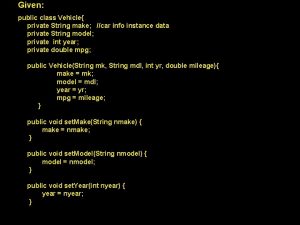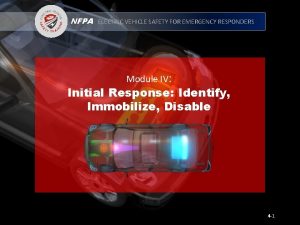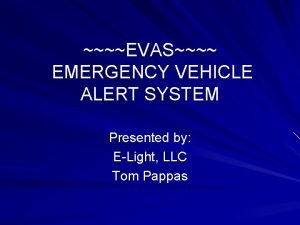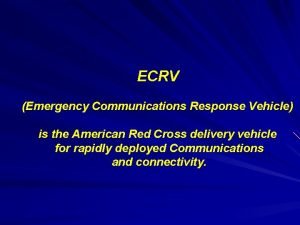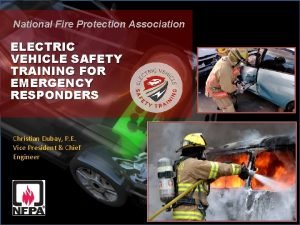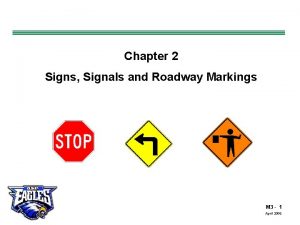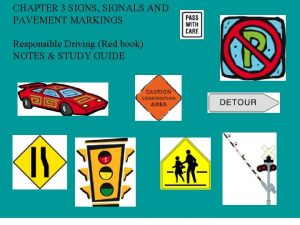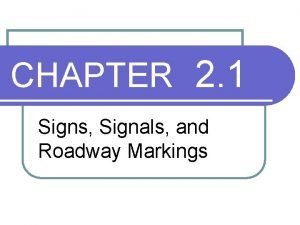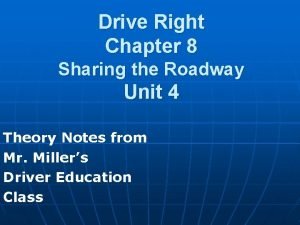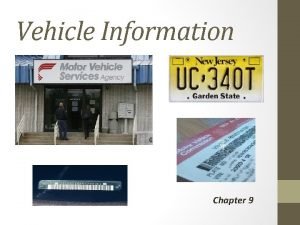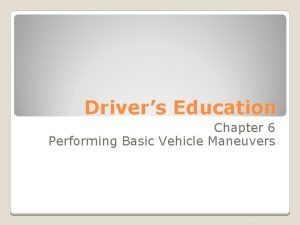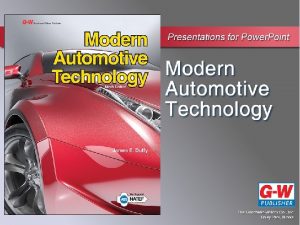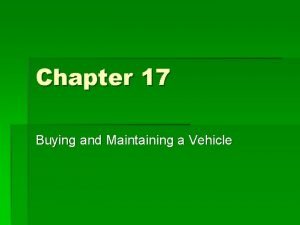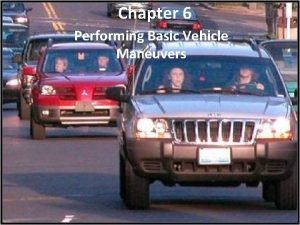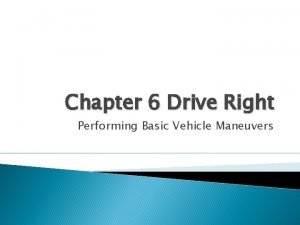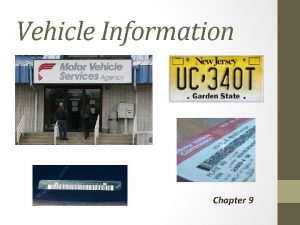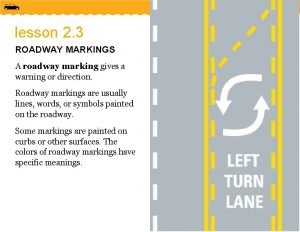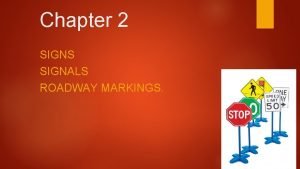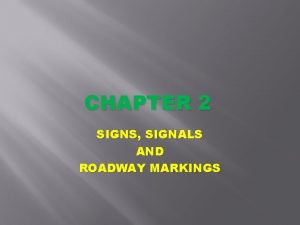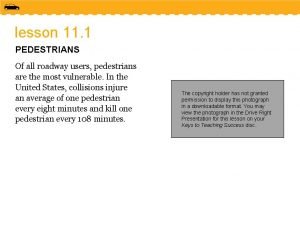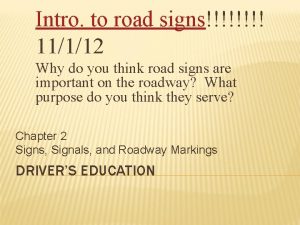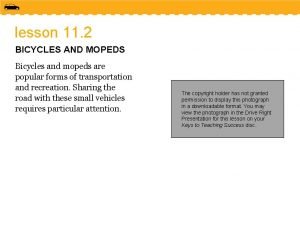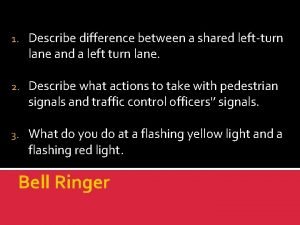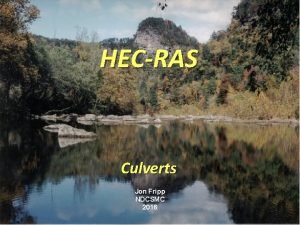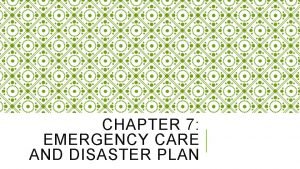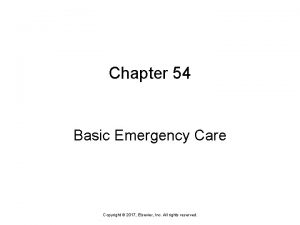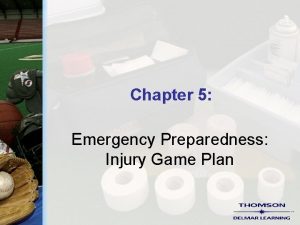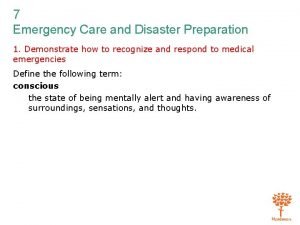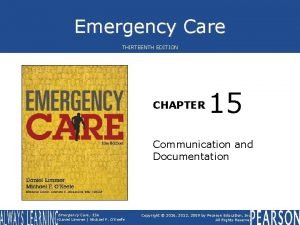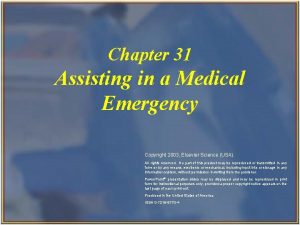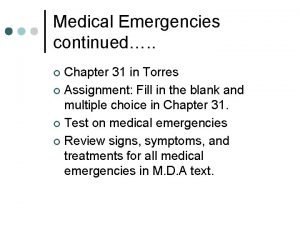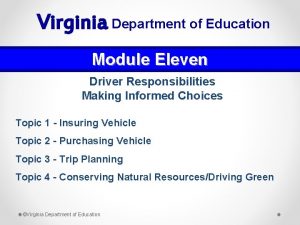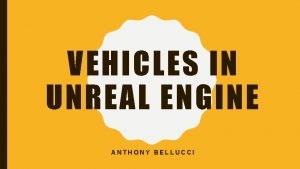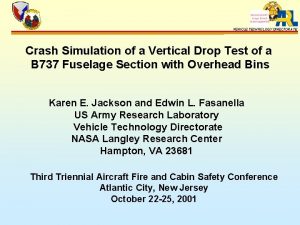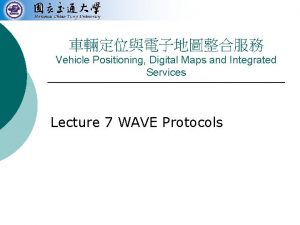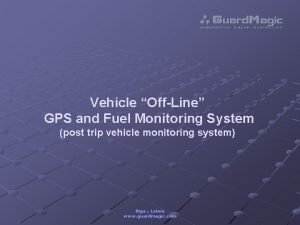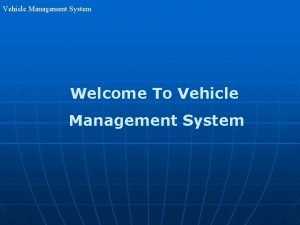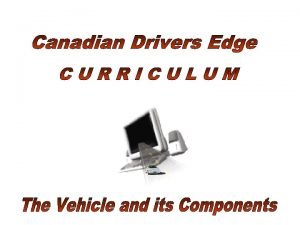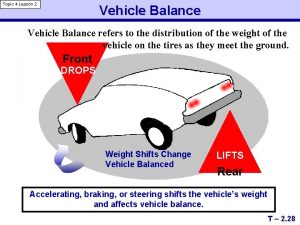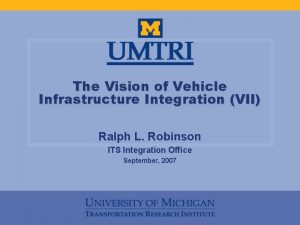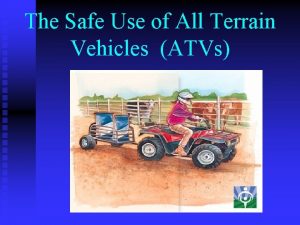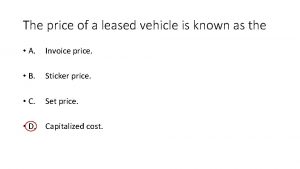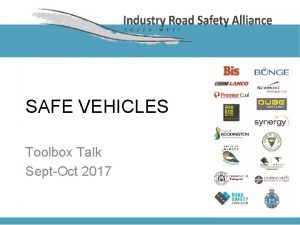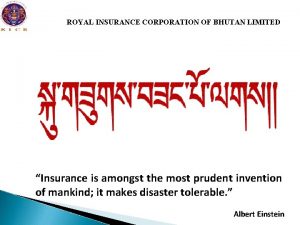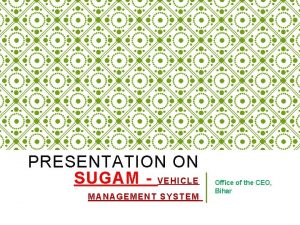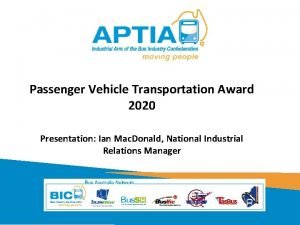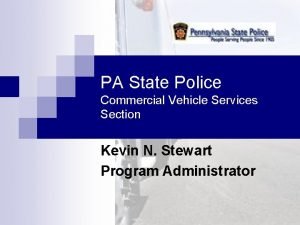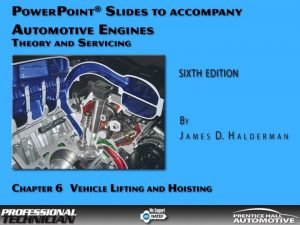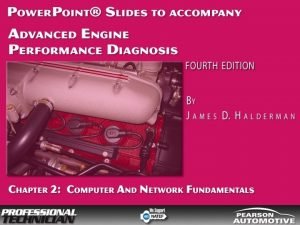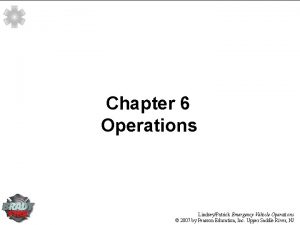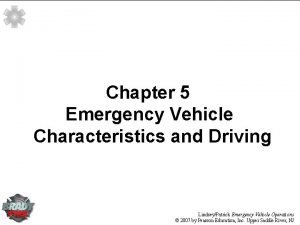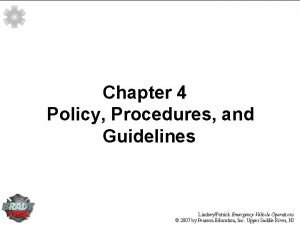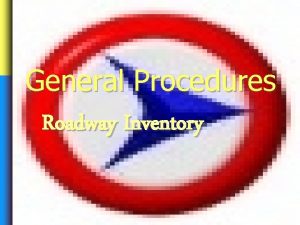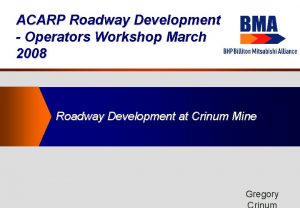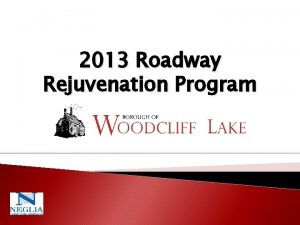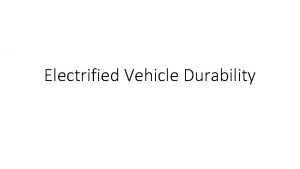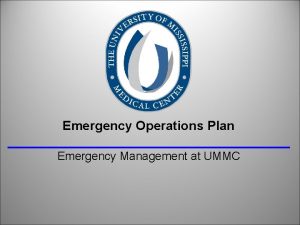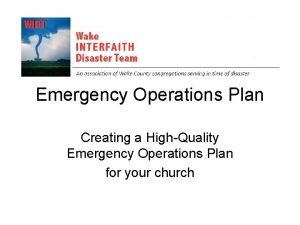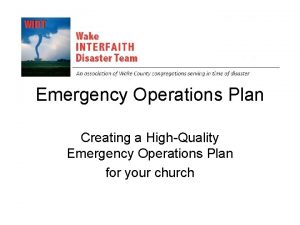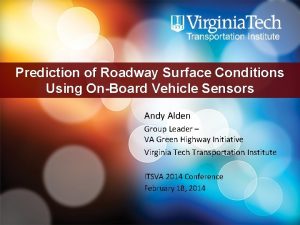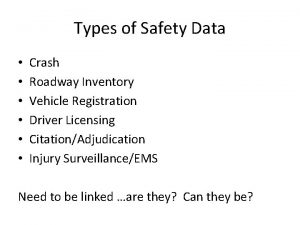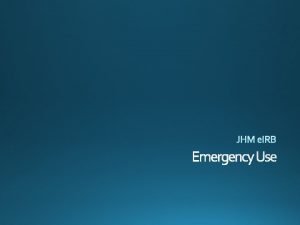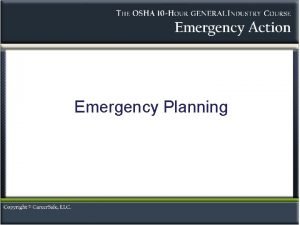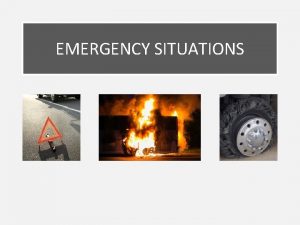Chapter 9 Roadway Operations LindseyPatrick Emergency Vehicle Operations





































































- Slides: 69

Chapter 9 Roadway Operations Lindsey/Patrick Emergency Vehicle Operations © 2007 by Pearson Education, Inc. Upper Saddle River, NJ

Objectives Explain the concept of roadway safety. List the core components of roadway/highway operations. Identify the ten best practices to ensure roadway safety. Lindsey/Patrick Emergency Vehicle Operations © 2007 by Pearson Education, Inc. Upper Saddle River, NJ

Case Study Review and discuss the case study. Lindsey/Patrick Emergency Vehicle Operations © 2007 by Pearson Education, Inc. Upper Saddle River, NJ

Terms Advance warning Block Buffer zone Downstream Flagger Shadow Taper Temporary work zone Transition zone Upstream Lindsey/Patrick Emergency Vehicle Operations © 2007 by Pearson Education, Inc. Upper Saddle River, NJ

Introduction Lindsey/Patrick Emergency Vehicle Operations © 2007 by Pearson Education, Inc. Upper Saddle River, NJ

The Manual on Uniform Traffic Control Devices or MUTCD Addresses virtually every component of highway safety. Published by the Federal Highway Administration(FHWA) under 23 Code of Federal Regulations (CFR), Part 655, Subpart F. Lindsey/Patrick Emergency Vehicle Operations © 2007 by Pearson Education, Inc. Upper Saddle River, NJ

Traffic Control Devices Fulfill a need Command attention Convey a clear, simple meaning Command respect from road users Give adequate time for proper response Lindsey/Patrick Emergency Vehicle Operations © 2007 by Pearson Education, Inc. Upper Saddle River, NJ

The Challenge Lindsey/Patrick Emergency Vehicle Operations © 2007 by Pearson Education, Inc. Upper Saddle River, NJ

Safety Lindsey/Patrick Emergency Vehicle Operations © 2007 by Pearson Education, Inc. Upper Saddle River, NJ

Tactical Procedures Never trust approaching traffic. Avoid turning your back to approaching traffic. Establish an initial “block” with the first arriving emergency vehicle or fire apparatus. Lindsey/Patrick Emergency Vehicle Operations © 2007 by Pearson Education, Inc. Upper Saddle River, NJ

Tactical Procedures Always wear Class III high visibility reflective vests during daylight operations. Always wear a structural firefighting helmet. Wear full protective clothing plus the highway safety vest at all vehicle-related emergencies. Lindsey/Patrick Emergency Vehicle Operations © 2007 by Pearson Education, Inc. Upper Saddle River, NJ

Tactical Procedures Turn off all sources of vision impairment Use fire apparatus and police vehicles to initially redirect the flow of moving traffic Establish advance warning and adequate transition area Lindsey/Patrick Emergency Vehicle Operations © 2007 by Pearson Education, Inc. Upper Saddle River, NJ

Tactical Procedures Use traffic cones and/or cones illuminated by flares Establish a fire department member assigned to the “Flagger” function Lindsey/Patrick Emergency Vehicle Operations © 2007 by Pearson Education, Inc. Upper Saddle River, NJ

Benchmarks for Safe Parking Always position first-arriving apparatus to protect the scene, patients, and emergency personnel. – – – Initial apparatus placement Angle apparatus on the roadway Allow apparatus placement to slow approaching motorists Use fire apparatus to block at least one additional traffic lane When practical, position apparatus in such a manner to protect the pump operator Lindsey/Patrick Emergency Vehicle Operations © 2007 by Pearson Education, Inc. Upper Saddle River, NJ

Benchmarks for Safe Parking Positioning of large apparatus must create a safe parking area. Establish a sufficient size work zone. Ambulance should be positioned within the protected work area. Lindsey/Patrick Emergency Vehicle Operations © 2007 by Pearson Education, Inc. Upper Saddle River, NJ

Benchmarks for Safe Parking Command shall stage unneeded emergency vehicles off the roadway or return these units to service whenever possible. At all intersections, or where the incident may be near the middle lane of the roadway, two or more sides of the incident will need to be protected. Lindsey/Patrick Emergency Vehicle Operations © 2007 by Pearson Education, Inc. Upper Saddle River, NJ

Benchmarks for Safe Parking Traffic cones shall be deployed from the rear of the blocking apparatus Personnel shall place cones and flares and retrieve cones while facing oncoming traffic. Lindsey/Patrick Emergency Vehicle Operations © 2007 by Pearson Education, Inc. Upper Saddle River, NJ

Benchmarks for Safe Parking Traffic cones shall be deployed at 15 feet intervals upstream of the blocking apparatus with the furthest traffic cone approximately 75 feet upstream to allow adequate advance warning to drivers. Additional traffic cones, when available, can be retrieved from police units to extend the advance warning area for approaching motorists. Lindsey/Patrick Emergency Vehicle Operations © 2007 by Pearson Education, Inc. Upper Saddle River, NJ

Command Control Assure that the first-arriving apparatus establishes an initial block to create an initial safe work area. Assign a parking location for all ambulances as well as later-arriving apparatus. Lindsey/Patrick Emergency Vehicle Operations © 2007 by Pearson Education, Inc. Upper Saddle River, NJ

Command Control Assure that all ambulances on-scene are placed within the protected work area (shadow) of the larger apparatus. Assure that all patient loading into EMS Units is done from within a protected work zone. The initial company officer and/or Incident Commander must operate as the Scene Safety Officer until this assignment is delegated. Lindsey/Patrick Emergency Vehicle Operations © 2007 by Pearson Education, Inc. Upper Saddle River, NJ

Command Control Command shall assure that Opticom strobe systems are turned OFF and that other emergency lighting remains ON. At residential medical emergencies, Command shall direct ambulances to park at the nearest curb to the residence for safe patient loading whenever possible. Lindsey/Patrick Emergency Vehicle Operations © 2007 by Pearson Education, Inc. Upper Saddle River, NJ

Personnel Functions Always maintain an acute awareness of the high risk of working in or near moving traffic. Never trust moving traffic. Always look before you move! Always keep an eye on the moving traffic! Avoid turning your back to moving traffic. Lindsey/Patrick Emergency Vehicle Operations © 2007 by Pearson Education, Inc. Upper Saddle River, NJ

Personnel Functions Personnel arriving in crew cabs of fire apparatus should exit and enter the apparatus from the protected ‘shadow’ side, away from moving traffic. Officers, vehicle and apparatus operators, crew members in apparatus with individual jump seat configurations and all ambulance personnel must exit and enter their units with extreme caution remaining alert to moving traffic at all times. Lindsey/Patrick Emergency Vehicle Operations © 2007 by Pearson Education, Inc. Upper Saddle River, NJ

Personnel Functions Protective clothing, Class III safety vest, and helmet must be donned prior to exiting the emergency vehicle. Lindsey/Patrick Emergency Vehicle Operations © 2007 by Pearson Education, Inc. Upper Saddle River, NJ

Personnel Functions Always look before opening doors and stepping out of apparatus or emergency vehicle into any moving traffic areas. When walking around fire apparatus or emergency vehicle, be alert to the individual proximity to moving traffic. Lindsey/Patrick Emergency Vehicle Operations © 2007 by Pearson Education, Inc. Upper Saddle River, NJ

Personnel Functions Police department personnel may place traffic cones or flares at the scene to direct traffic. Place flares, where safe to do so. Lindsey/Patrick Emergency Vehicle Operations © 2007 by Pearson Education, Inc. Upper Saddle River, NJ

Limited-Access Highway Operations Lindsey/Patrick Emergency Vehicle Operations © 2007 by Pearson Education, Inc. Upper Saddle River, NJ

Unique Safe Parking Procedures First-arriving vehicle or apparatus shall establish an initial block of the lane(s) occupied by the damaged vehicle plus one additional traffic lane. In some departments, a ladder truck apparatus is automatically dispatched to all vehicle-related incidents on all limitedaccess, high-volume expressways, tollways, and highways within the city. Lindsey/Patrick Emergency Vehicle Operations © 2007 by Pearson Education, Inc. Upper Saddle River, NJ

Unique Safe Parking Procedures Police department vehicles can be used to provide additional blocking of additional traffic lanes as needed. Staging of additional companies off the highway may be required. Lindsey/Patrick Emergency Vehicle Operations © 2007 by Pearson Education, Inc. Upper Saddle River, NJ

Unique Safe Parking Procedures Command should establish a liaison with the Police department. The termination of the incident must be managed with the same aggressiveness as initial actions. Lindsey/Patrick Emergency Vehicle Operations © 2007 by Pearson Education, Inc. Upper Saddle River, NJ

Ten Cones of Highway Incident Safety There Is No Substitute for Training Multiagency Coordination and Communications Are a Must—A Unified Incident Command Is Essential Limit Your Exposure…Limit Your Time Give Traffic Plenty of Warning Protect the Scene with Apparatus (Continued) Source – VFIS 2004 Lindsey/Patrick Emergency Vehicle Operations © 2007 by Pearson Education, Inc. Upper Saddle River, NJ

Ten Cones of Highway Incident Safety Always Work Away From the Traffic Be Prepared to Shut Down the Roadway Be Seen and Not Hurt Dress for the Occasion Accountability Matters Source – VFIS 2004 Lindsey/Patrick Emergency Vehicle Operations © 2007 by Pearson Education, Inc. Upper Saddle River, NJ

Officer’s Safe Parking “Cue Card” Block at least one additional lane Block so pump panel is “downstream” Block most critical or highest traffic volume direction first Consider requesting additional Police department assistance Lindsey/Patrick Emergency Vehicle Operations © 2007 by Pearson Education, Inc. Upper Saddle River, NJ

Crews Wear Proper PPE with Helmet Class III vests at all times Helmet at all times Full PPE plus Class III vest between dusk and dawn or inclement weather Lindsey/Patrick Emergency Vehicle Operations © 2007 by Pearson Education, Inc. Upper Saddle River, NJ

Establish More Than Adequate Advance Warning Traffic cones at 15 feet intervals. Deploy minimum 5 cones upstream. Cones only “Suggest” they don’t Block! Expand initial safe work zone. Lindsey/Patrick Emergency Vehicle Operations © 2007 by Pearson Education, Inc. Upper Saddle River, NJ

Direct Placement of Ambulances Assure ambulances park within shadow of larger apparatus as directed. Lane 1 is farthest right lane, next is Lane 2, then Lane 3, etc. , from approaching motorist’s point of view. Lindsey/Patrick Emergency Vehicle Operations © 2007 by Pearson Education, Inc. Upper Saddle River, NJ

Direct Placement of Ambulances Direct ambulance to “block to the right” or “block to the left” to protect loading doors. All patient loading into Med Units is done from within a protected work zone. Lindsey/Patrick Emergency Vehicle Operations © 2007 by Pearson Education, Inc. Upper Saddle River, NJ

You Are the Scene Safety Officer Consider assigning a responder as an upstream “Spotter” as necessary for approaching traffic Lindsey/Patrick Emergency Vehicle Operations © 2007 by Pearson Education, Inc. Upper Saddle River, NJ

Night or Reduced Light Conditions Turn OFF vehicle headlights Turn OFF Opticom Provide overall scene lighting All personnel in PPE w/helmets Illuminate cones with flares Consider additional vehicle(s) for additional upstream “Block” Lindsey/Patrick Emergency Vehicle Operations © 2007 by Pearson Education, Inc. Upper Saddle River, NJ

Limited-Access, High-Volume Highway Incidents Establish initial block: minimum two lanes Ladder truck establishes upstream block Place cones and/or cones illuminated by flares upstream of ladder truck apparatus Lindsey/Patrick Emergency Vehicle Operations © 2007 by Pearson Education, Inc. Upper Saddle River, NJ

Limited-Access, High-Volume Highway Incidents Establish Flagger position Driver operator of ladder truck apparatus Use police department vehicles for additional blocking Stage additional companies off highway Establish liaison with Police department Terminate incident aggressively Lindsey/Patrick Emergency Vehicle Operations © 2007 by Pearson Education, Inc. Upper Saddle River, NJ

The Georgia Move-Over-Law Review the law. Lindsey/Patrick Emergency Vehicle Operations © 2007 by Pearson Education, Inc. Upper Saddle River, NJ

Case Study Review and discuss the case study. Lindsey/Patrick Emergency Vehicle Operations © 2007 by Pearson Education, Inc. Upper Saddle River, NJ

Apparatus Placement Lindsey/Patrick Emergency Vehicle Operations © 2007 by Pearson Education, Inc. Upper Saddle River, NJ

Scene Lighting and Marking Lindsey/Patrick Emergency Vehicle Operations © 2007 by Pearson Education, Inc. Upper Saddle River, NJ

Reflective Vests Lindsey/Patrick Emergency Vehicle Operations © 2007 by Pearson Education, Inc. Upper Saddle River, NJ

Standard Operating Procedures Lindsey/Patrick Emergency Vehicle Operations © 2007 by Pearson Education, Inc. Upper Saddle River, NJ

Effect on Highway Operations Lindsey/Patrick Emergency Vehicle Operations © 2007 by Pearson Education, Inc. Upper Saddle River, NJ

Limitations Lindsey/Patrick Emergency Vehicle Operations © 2007 by Pearson Education, Inc. Upper Saddle River, NJ

Recommendations for Safe Operations During roadway/highway operations, position the vehicle at a 45 -degree angle to the lanes. – Fire engines – Rescue vehicles – Ambulances Lindsey/Patrick Emergency Vehicle Operations © 2007 by Pearson Education, Inc. Upper Saddle River, NJ

Recommendations for Safe Operations Turn off forward-facing emergency vehicle lighting, especially on divided roadways. Reduce the use of lighting as much as possible at the scene. Require crew members to wear highly reflective material when conducting roadway/highway operations. Lindsey/Patrick Emergency Vehicle Operations © 2007 by Pearson Education, Inc. Upper Saddle River, NJ

Recommendations for Safe Operations Remain vigilant during all phases of roadway/highway operations. Work with neighboring ESOs to develop similar roadway/highway operation policies. Allow all members to submit suggestions for policy enhancements. Lindsey/Patrick Emergency Vehicle Operations © 2007 by Pearson Education, Inc. Upper Saddle River, NJ

Policies Assign a key member of the management team responsibility and authority to set and enforce comprehensive driver safety policy. Enforce mandatory seat belt use. Do not require workers to drive irregular hours or far beyond their normal working hours. Lindsey/Patrick Emergency Vehicle Operations © 2007 by Pearson Education, Inc. Upper Saddle River, NJ

Policies Do not require workers to conduct business on a cell phone while driving. Develop work schedules that allow employees to obey speed limits and to follow applicable hoursof-service regulations. Lindsey/Patrick Emergency Vehicle Operations © 2007 by Pearson Education, Inc. Upper Saddle River, NJ

Fleet Management Adopt a structured vehicle maintenance program. Provide company vehicles that offer the highest possible levels of occupant protection. Lindsey/Patrick Emergency Vehicle Operations © 2007 by Pearson Education, Inc. Upper Saddle River, NJ

Safety Programs Teach workers strategies for recognizing and managing driver fatigue and in-vehicle distractions. Provide training to workers operating specialized motor vehicles or equipment. Emphasize to workers the need to follow safe driving practices on and off the job. Lindsey/Patrick Emergency Vehicle Operations © 2007 by Pearson Education, Inc. Upper Saddle River, NJ

Driver Performance Ensure that workers assigned to drive on the job have a valid driver’s license and one that is appropriate for the type of vehicle to be driven. Check driving records of prospective employees, and perform periodic rechecks after hiring. Maintain complete and accurate records of workers’ driving performance. Lindsey/Patrick Emergency Vehicle Operations © 2007 by Pearson Education, Inc. Upper Saddle River, NJ

Crash Prevention and Vehicle Safety Programs Vehicle placement at emergency scene: – Placement on street and highways – Positioning so as to minimize the blinding effect of warning lights – Identify potential hazards at scene – Identify safe distances from certain scenes – Consideration for ease of leaving the scene Prevention Strategies for Employers (NIOSH DHHS Publication No. 2004 -136 (2004, March)). Lindsey/Patrick Emergency Vehicle Operations © 2007 by Pearson Education, Inc. Upper Saddle River, NJ

Vehicle Placement At emergencies located on streets and highways. At incidents so as to minimize the blinding effect of the warning lights on approaching and passing vehicles. Identification of potential hazards affecting placement of vehicles at emergency scenes. Lindsey/Patrick Emergency Vehicle Operations © 2007 by Pearson Education, Inc. Upper Saddle River, NJ

Vehicle Placement Identify appropriate safe distances from certain types of emergencies. Consideration for the ease of leaving the scene. Lindsey/Patrick Emergency Vehicle Operations © 2007 by Pearson Education, Inc. Upper Saddle River, NJ

Personnel Awareness NIOSH recommends: Develop, implement, and enforce standard operating procedures (SOPs) regarding emergency operations for roadway incidents. Implement an incident management system to manage all emergency incidents. Establish a unified command for incidents that occur where multiple agencies have jurisdiction. Ensure that a separate incident safety officer is appointed. Lindsey/Patrick Emergency Vehicle Operations © 2007 by Pearson Education, Inc. Upper Saddle River, NJ

Personnel Awareness Develop preincident plans for areas that have a high rate of motor vehicle crashes. Establish preincident agreements with law enforcement and other agencies. Lindsey/Patrick Emergency Vehicle Operations © 2007 by Pearson Education, Inc. Upper Saddle River, NJ

Personnel Awareness Ensure firefighters are trained in safe procedures for operating in or near moving traffic. Ensure that firefighters wear suitable highvisibility apparel, such as a strong yellowgreen or orange reflecting flagger vest when operating at an emergency scene. Lindsey/Patrick Emergency Vehicle Operations © 2007 by Pearson Education, Inc. Upper Saddle River, NJ

Personnel Awareness Firefighters: Ensure that the fire apparatus is positioned to take advantage of topography and weather conditions and to protection from traffic. Park or stage unneeded vehicles off the roadway. Control the oncoming vehicles before safely turning your attention to the emergency. Position yourself and any victim(s) in a secure area. Use a traffic control device that maximizes your visibility. Lindsey/Patrick Emergency Vehicle Operations © 2007 by Pearson Education, Inc. Upper Saddle River, NJ

Vehicle Markings Lindsey/Patrick Emergency Vehicle Operations © 2007 by Pearson Education, Inc. Upper Saddle River, NJ

Remain Vigilant Lindsey/Patrick Emergency Vehicle Operations © 2007 by Pearson Education, Inc. Upper Saddle River, NJ

Sample SOP/SOGs Lindsey/Patrick Emergency Vehicle Operations © 2007 by Pearson Education, Inc. Upper Saddle River, NJ

NIOSH Recommendations/Discussions Review recommendations. Lindsey/Patrick Emergency Vehicle Operations © 2007 by Pearson Education, Inc. Upper Saddle River, NJ

Summary Highway operations pose special risks to personnel performing fire, rescue, and EMS functions. Preventing injury to responders must be at the forefront during any emergency situation. Basic responder awareness during response and onscene can dramatically reduce the potential of a secondary incident. Strategically positioning vehicles, wearing personal protective and reflective apparel, and placing appropriate signage/coneage, and reducing exposure time can enhance scene safety for all responders. Lindsey/Patrick Emergency Vehicle Operations © 2007 by Pearson Education, Inc. Upper Saddle River, NJ
 Cosmic superclass
Cosmic superclass Nfpa electric vehicle emergency field guide
Nfpa electric vehicle emergency field guide Emergency vehicle alert system
Emergency vehicle alert system Emergency communications response vehicle
Emergency communications response vehicle Nfpa electric vehicle safety training
Nfpa electric vehicle safety training Drive right chapter 8
Drive right chapter 8 Is slower traffic keep right a regulatory sign
Is slower traffic keep right a regulatory sign A short section of corrugated roadway
A short section of corrugated roadway Drivers ed chapter 2 vocabulary
Drivers ed chapter 2 vocabulary Signs signals and pavement markings
Signs signals and pavement markings What shape is a warning sign
What shape is a warning sign You are meeting a large truck on a two-lane road. you *
You are meeting a large truck on a two-lane road. you * Drivers ed chapter 2 signs signals and roadway markings
Drivers ed chapter 2 signs signals and roadway markings Chapter 9 vehicle information
Chapter 9 vehicle information What should be used when performing vehicle maneuvers
What should be used when performing vehicle maneuvers Chapter 9 vehicle maintenance fluid service and recycling
Chapter 9 vehicle maintenance fluid service and recycling Chapter 6 performing basic vehicle maneuvers answers
Chapter 6 performing basic vehicle maneuvers answers Chapter 3 basic vehicle control
Chapter 3 basic vehicle control Chapter 17 buying and maintaining a vehicle
Chapter 17 buying and maintaining a vehicle Chapter 16 responsibilities of owning a vehicle
Chapter 16 responsibilities of owning a vehicle Chapter 3 basic vehicle control
Chapter 3 basic vehicle control The safest turnabout maneuver is
The safest turnabout maneuver is Drive right chapter 6
Drive right chapter 6 Chapter 9 vehicle information
Chapter 9 vehicle information Solid yellow line and broken yellow line
Solid yellow line and broken yellow line What are the 6 types of special roadway markings
What are the 6 types of special roadway markings What are 6 types of special roadway markings
What are 6 types of special roadway markings Lane use control signal
Lane use control signal Are the most vulnerable roadway users
Are the most vulnerable roadway users The purposes of traffic signs are *
The purposes of traffic signs are * Riders of bicycles and mopeds on a roadway
Riders of bicycles and mopeds on a roadway A short section of corrugated roadway that warns of hazards
A short section of corrugated roadway that warns of hazards What does ipde mean
What does ipde mean Hec-ras deck roadway data editor
Hec-ras deck roadway data editor Da tran
Da tran Managing risk with the ipde process
Managing risk with the ipde process Emergency care and disaster preparation chapter 7
Emergency care and disaster preparation chapter 7 Chapter 54 basic emergency care
Chapter 54 basic emergency care Chapter 5 emergency preparedness injury game plan
Chapter 5 emergency preparedness injury game plan Chapter 36 emergency preparedness and protective practices
Chapter 36 emergency preparedness and protective practices Chapter 8 emergency care first aid and disasters
Chapter 8 emergency care first aid and disasters Emergency care and disaster preparation chapter 7
Emergency care and disaster preparation chapter 7 Prehospital emergency care 11th edition chapter 1
Prehospital emergency care 11th edition chapter 1 Emergency care 13th edition chapter 1
Emergency care 13th edition chapter 1 Chapter 31 assisting in a medical emergency
Chapter 31 assisting in a medical emergency Chapter 36 emergency preparedness and protective practices
Chapter 36 emergency preparedness and protective practices Define medical emergency chapter 31
Define medical emergency chapter 31 Module 10 topic 4 drivers ed
Module 10 topic 4 drivers ed Curriculum guide for driver education in virginia module 11
Curriculum guide for driver education in virginia module 11 Ue4 vehicle movement component
Ue4 vehicle movement component Vehicle technology directorate
Vehicle technology directorate Vehicle signal specification
Vehicle signal specification Vehicle positioning
Vehicle positioning Fuel monitoring system for vehicles
Fuel monitoring system for vehicles Vehicle management system login
Vehicle management system login Getting acquainted with the vehicle
Getting acquainted with the vehicle Vehicle balance refers to:
Vehicle balance refers to: Vehicle weight shifts forward and back is called
Vehicle weight shifts forward and back is called Coverage area
Coverage area All terrain vehicle towing capacity 1050lbs
All terrain vehicle towing capacity 1050lbs Price of a leased vehicle is known as the
Price of a leased vehicle is known as the Speed detection of moving vehicle
Speed detection of moving vehicle Toolbox talk vehicle safety
Toolbox talk vehicle safety Ricb bhutan
Ricb bhutan Sugam vehicle management system
Sugam vehicle management system Passenger vehicle transportation award
Passenger vehicle transportation award Pa state police commercial vehicle safety division
Pa state police commercial vehicle safety division Technician a says that a hoist can be stopped
Technician a says that a hoist can be stopped The sae term for the vehicle computer is
The sae term for the vehicle computer is Chapter 9 natural laws and car control
Chapter 9 natural laws and car control
